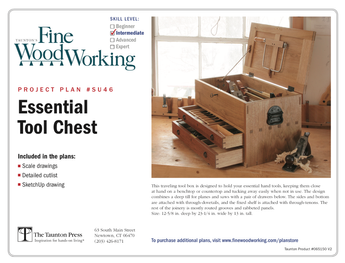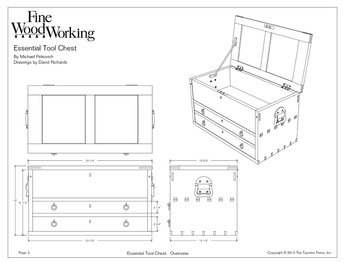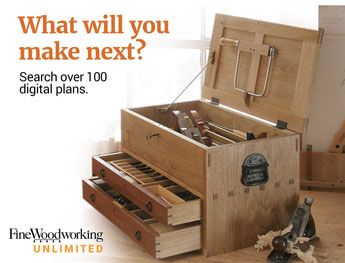Sawstop Contractor saw vs. Laguna Fusion F1
Friends –
My shop is in a small basement with a wooden staircase that bottoms at a 90 degree angle. Access is only through the kitchen, in the middle of the house. Due to these limitations, I can only buy tools that I can get up the exterior stairs, through the house, and then down the narrow 27″ basement steps.
Up to now, I’ve been using a Dewalt jobsite saw, which I’ve tricked up with a auxiliary fence, outfeed table, etc. (please see attached pic). The Dewalt is a fine saw for what it is, but I’ve outgrown it. The table isn’t flat, their fence isn’t square, and trying to dial in a miter is pretty well impossible with how the blade angle is adjusted and locked.
What I would REALLY like is a real cabinet saw, with cast iron tables and a Biesemeyer-style fence.I learned at a school with multiple large SawStops, and I have missed that level of quality in my own shop. I need precision, safety, and good dust collection. That being said, the only cabinet saw that I’m aware of that is around 200 pounds is the Laguna Fusion F1. It looks to have all of the features I need (except for the SawStop brake), but I have read mixed reviews, and some of them were really bad regarding build quality and Laguna customer service.
The other alternative I see is the SawStop Contractor saw with the optional cast iron tables and upgraded fence. The saw is actually heavier than the Laguna, and because of the way it’s packaged, I think it would make it into the house and down the stairs with a little help. Their cabinet saw is over 400 pounds, and that is a non-starter for my situation.
At this point, I’m leaning toward the SawStop because of the safety feature and the ability to add cast iron wings, as I will be using the saw table as the outfeed from my planer and router table. I’d appreciate any comments from anyone with experience with either of these two saws, or with another saw that I’m not currently aware of.
Thanks!!















Replies
You can't cut a finger off unless you feed wood barehanded into the cut. Use featherboards, push-shoes, and push-sticks and you've solved that problem.
Kickback is what you should be worried about.
I'd focus on a saw's anti-kickback equipment, arbor runout, fence accuracy (you need to set it a little open at the back and it needs to hold that setting) beefiness of trunnion, quality of motor, accuracy of cast iron grind. If the SawStop ticks all those boxes, great. If not, get a saw that does.
The sawstop PCS comes in multiple boxes and requires assembly. It will fit into your shop. Getting it back out will require reversing the steps.
I am a 75 yr old part time woodworker. I have recently gone to all hand tools due to shop space and age. I had Saw Stop contractor saw I bought used for several years and it did all I needed. Big upgrade from a previous Rigid contractor saw.
I have a couple friends my age or older that have tried out the Saw Stop safety feature. And one who didn't have a Saw Stop. The cost of one trip to the ER would buy several really nice tools.
_mj_ speaks true. A cab saw format has a smaller footprint than a contractor saw when assembled. The Fusion F1 looks similar to the Craftsman zipcode hybrid saw I owned. I would see no problem unboxing the saw body ad refer-dollying (is that a word?) it down the stairs. I would have someone at the bottom to assist in turning the corner.
I have a Saw Stop 3HP PCS and all the safety aversion aside . . . if I had not come across a windfall in acquiring it I would probably still be using my 22124 hybrid. I guess in short I am saying that I would take a cab-saw or hybrid over the contractor format due to the inherent alignment issues during tilted cuts.
We all have to adapt to our available space, power, access, etc. The end result is what I would focus on. I have even removed windows and doors to get machines through and then restored them. The work involved in that exercise faded to black with the joy of using the right tool for the job long term.
If I were buying a table saw, the only one I would get at this moment in time would be the Saw Stop due to its safety feature. It’s just too important of a feature for me personally to go with any other brand.
Even the bigger sawstop PCS will be in pieces in multiple boxes when it comes. Move it down in pieces and sell it with the house if you move on.
Go big.
When my PCS was delivered it was broken down but the center section was a beast to maneuver still.
You will NOT get it into place without at least 2 very strong bodies and even then it sounds sketch.
I would get a precision saw for sure,. its time.
I upgraded from SS jobsite for the same reasons. Although ive found specific angled chamfer bits are more accurate, faster, and easier for miters (bevels??) usually.
You'll be able to deconstruct it further.
The motor can come out of any of them and possibly the top. That will lighten up the center unit enough to be a single-man move most likely. or at least 2 average men.
Also, you may want to hold off on the purchase. I believe there's a law that passed that is requiring all saws to have the brake now. If that's important to you.
Although that might be a reason not to wait too depending on your opinions.
Anyway don't quote me. Do some research.
I wouldn't have gone SS if it weren't for that. there are better saws. not that i have any real complaints about my PCS really. just what I hear.
Sawstop support is great and could help you with disassembly and reassembly.
Make sure you go 240V as well. You have the voltage you only need an RV cable (10AWG) and you are in business. Maybe a 10-dollar breaker if you plan on cooking while sawing. But if it were my wife id just install an interlock :D cookies can wait.
I have owned a Laguna Fusion since 2017 (before Laguna had multiple models, but essentially a F1). I am an avid hobbyist and use it almost every day. It is a great saw and I have had zero quality problems.
On the other hand, if you can afford a Saw Stop cabinet saw, go for it. (It is at least $1000 more than the Laguna.) Saw stop is an excellent piece of equipment. I have used them several times and if money was not a factor, I’d have purchased one.
I am just a hobbyist, so my view is a bit skewed. I think these decisions should consider what you will be doing with it, and how much time will you actually be running the saw. If you're cutting 12/4 oak posts every day, thats one thing. If you're only making small projects every now and then, it's not worth it to buy a big cabinet saw. I think you could measure the time my saw was running as a few hours in a year. A cabinet saw would look nice, but be overkill.
I have the SS contractor saw, and it does everything I need. And I had to disassemble the components to get them down the stairs to the basement so I know what OP means.
do you have kids, expect you might have friends work in your shop, or plan to have either in the future?
I have kids, but they're not in the shop, and I use a TS rarely. Already experienced kickback. I wouldn't let the kids use the site type TS that I have (stationary TS in the past, but long gone).
I'd never need the SS function for myself - don't use a TS enough (very seldom, actually) and have no need to try to push limits to cut small things that are easier just done by hand. But if my son wanted to woodwork with a TS, he'd watch me cut parts for him or I'd get a SS.
That's flawed logic.
The fact that you use a table saw seldom means you are most likely to have an accident in which the SS function would save you.
The same is supposedly said for the people who use a table saw the most. complacency and repetition are what make them high risk.
The numbers show that the safest group is the one right in the middle of the curve. They use the equipment often enough to be experienced and skilled but not so much that they become unfocused and overconfident.
Kickback is usually how people lose fingers. The kick can yank your digits into the blade faster than your nervous system can get the message to your brain, much less send a response back and wait for action. regardless of how far away your digits may be originally.
That's why a riving knife is the most important safety feature.
At the end of the day none of the stats even matter. no one is protected through experiance or not. One simple momentary lapse in focus or judgment is all it takes. 1 year or 50 years xp. it doesn't matter. we all have those moments.
I don't mean to turn this into another SS vs. not debate.
Just felt unsafe logic should be corrected is all.
I appreciate all of the comments and debate. I just pulled the trigger on a SawStop contractor saw with cast iron extensions and the upgraded fence. Thanks!
I'm in the same situation as you, ie. small shop in a basement with a 90 degrees stair... The SawStop Contractor saw was my first choice for safety and handling. They ship in a few boxes. I removed everything I could from the boxes, (motors, extensions, base legs, etc) and reclosed the main box and slid it slowly in my basement. After a few year very satisfied.
Nobody wants to lose a finger, but kickback can kill, and it also puts into motion the physics that can cause an amputation.
Kickback is, by far, the biggest danger in using a tablesaw.
Your best prevention against amputating a digit is to not feed wood into the blade with bare hands. The SawStop mechanism is a backup, not your first line of defense.
Your best prevention against kickback is a saw with a powerful motor, beefy riving knife, and the ability to hold adjustment in all its moving parts, especially the fence.